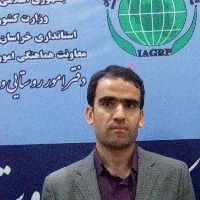Analyzing the Challenges Faced by Sustainable Economic Development in the Villages of Balouchestan Emphasizing Peasant Sub-Culture (Case Study: Chahan Dehestan of Nikshahr County)
Purpose: The present study aims at discovering the relationship between economic problems and limitations in Chahan rural district, and sociocultural weaknesses (with regard to the elements of peasant sub-culture). Design/methodology/approach: With regard to the purpose, it is an applied study and it is descriptive-analytical regarding its methodology. Data was collected in two ways: field and documentary. In field studies, we used questionnaires, interviews, and observations at the same time. The statistical population of the study includes 9 villages with 1121 households among 43 villages in Chahan Dehestan; and 285 households were selected as the sample using Cochran. Statistical analysis of the data was performed at two levels; at the first level, the correlation of 7 peasant sub-cultures were identified using Spearman test; and at the second level, the tests U and H were used to determine the differences among the above components in the society groups. Findings: The findings indicate that effectiveness of components like lack of innovation with significance coefficient of 0.022, extreme fatalism with significance coefficient equal to 0.020, and lack of foresight (disability to ignore immediate benefits for the sake of future benefits) with significance coefficient of 0.006 on economy was confirmed and it was proved that they limit economic sustainable development in the rural district under study. In addition, except for extreme fatalism and low level of dreams and wishes, the average of other components of peasant sub-culture are different with regard to gender, age, level of education, types of jobs, and sample villages. In general, what Rogers called a barrier to economic development in the villages in developing countries in his theory of peasant sub-culture, is not true in Chahan rural district (except for the three components whose negative effects were confirmed) but the cultural status of this society is such that it can protect and support economic sustainable development.
Practical implications: Since the cultural features in the society under study support economic sustainable development (and does not prevent it), studying adaptability of economic plans with cultural status of the society and exploiting its elements smartly to facilitate the process of economic sustainable development in Chahan Dehestan is recommended. Originality/value: The present study explains the relationship between sociocultural factors (peasant sub-culture) and economic sustainable development through a combined method (qualitative-quantitative), and is the first scientific study in its kind in the studied scope
- حق عضویت دریافتی صرف حمایت از نشریات عضو و نگهداری، تکمیل و توسعه مگیران میشود.
- پرداخت حق اشتراک و دانلود مقالات اجازه بازنشر آن در سایر رسانههای چاپی و دیجیتال را به کاربر نمیدهد.



